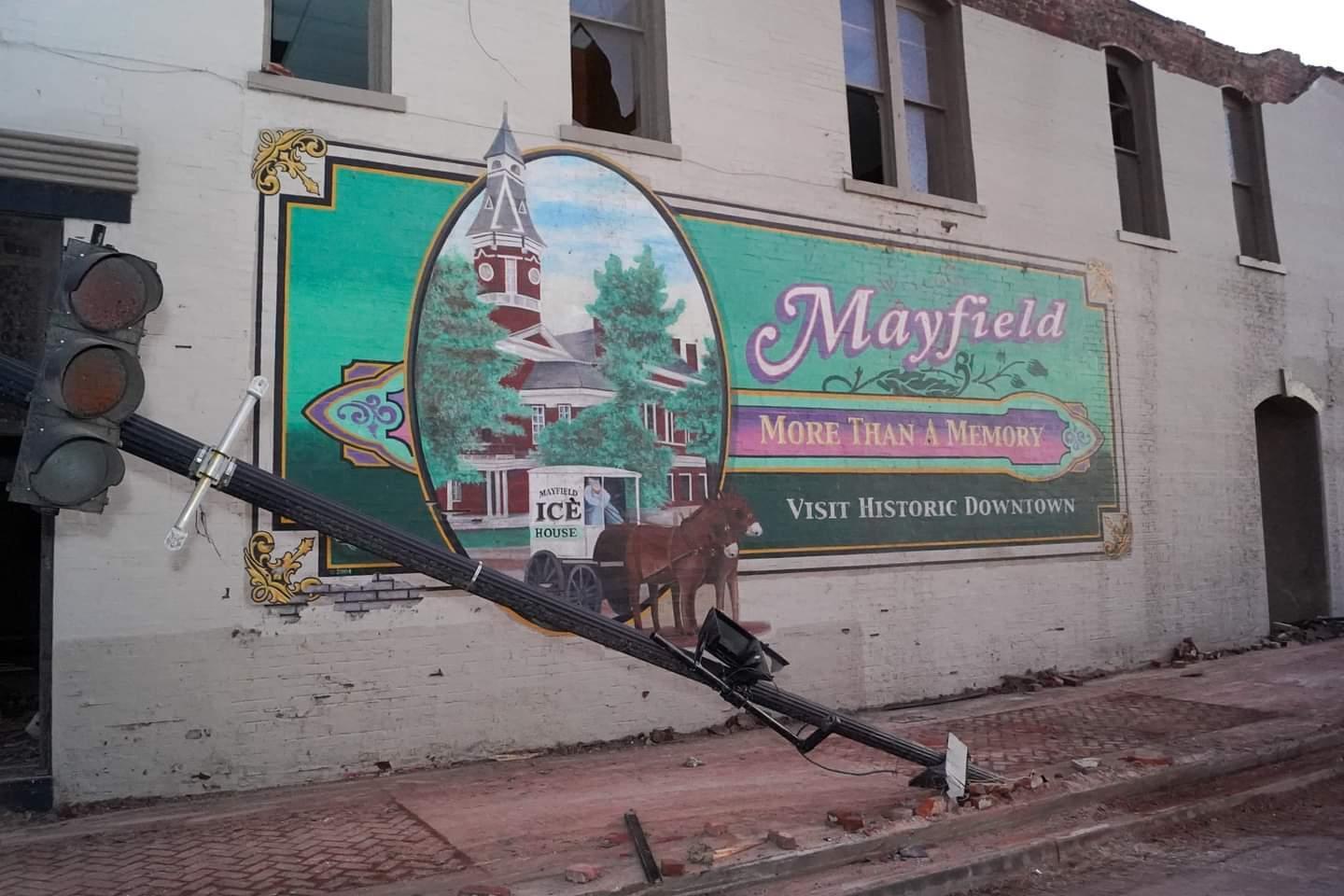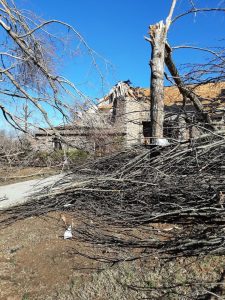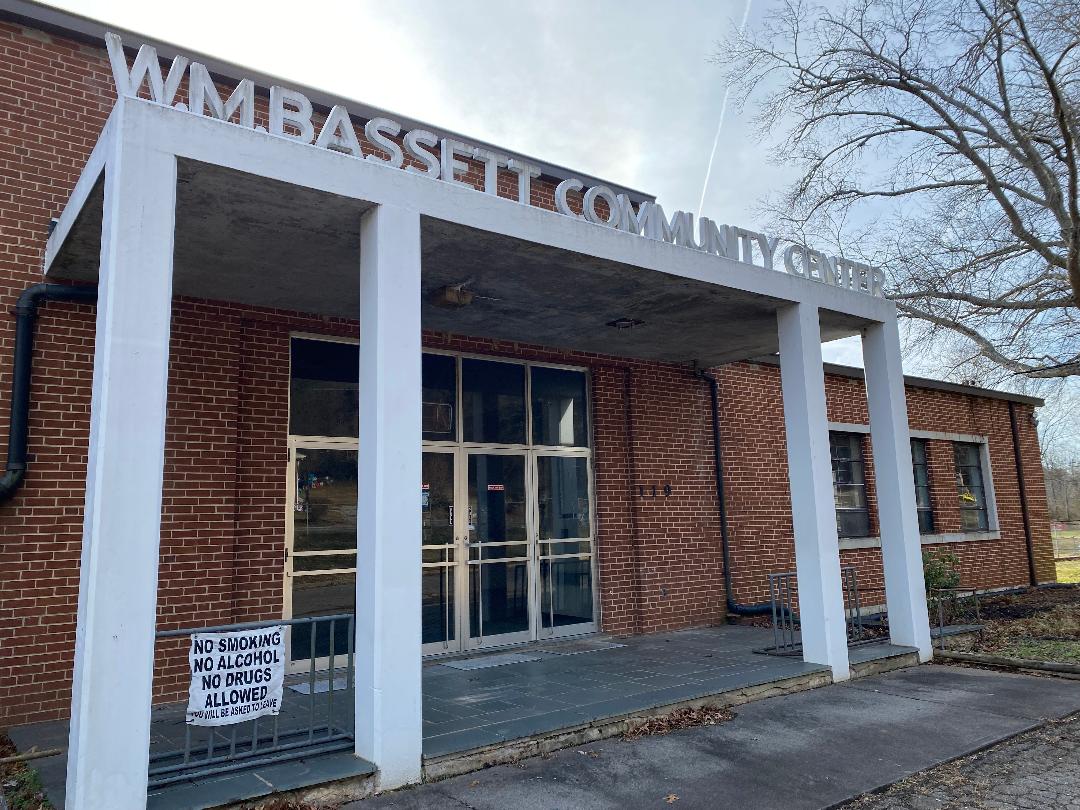
By Callie Hietala
Phyllis Bowling Youngblood has lived in Mayfield, Kentucky since 1974.
“It’s become my hometown,” she said.
Her first hometown, though, was Martinsville. She was born here in 1947 and graduated from Drewry Mason School in 1966. She met her husband, Wayne, while attending college and followed him to Mayfield, where he grew up.
In mid-December, the Youngblood’s hometown was devastated by what Kentucky Governor Andy Beshear called “the most devastating tornado event in our state’s history.” Multiple tornadoes touched down in the state. Mayfield was among the hardest hit communities.
After the storm, the National Weather Service categorized the tornado that ripped through the small town as an E4, its second most destructive rating, classified by winds of at least 190 miles per hour.
Youngblood recalled watching the local weather channel on Dec. 10 around 9:30 p.m. The anchor was tracking the path of the tornado that was about to wreak havoc upon the small town.
“They were calling this a monster,” she said.
When the town’s warning sirens began to blare, the couple went to the window “and we saw three skunks that were real close to the ground, running around crazy like we never saw before,” she said.
The two retreated to a bathroom to take shelter and waited as the power went off (though their generators kicked on). They lost cable, service to their house phone, and internet. However, they still had use of a cell phone and friends in nearby Metropolis, IL, kept them informed on news about the storm.
Eventually, her husband turned on his police scanner where, Youngblood said, they heard “horrible things” including reports of severed arms and a nursing home being hit.
“We could tell it was catastrophic,” she said.
She, her husband, and their home were all spared from the tornado’s fury. However, many other homes and buildings were destroyed, including the first home the couple shared after moving to Mayfield.
“First we were in a daze, disbelief,” Youngblood said. “I guess we were in shock. Then, we started feeling horrible depression and grief, then guilt” because they and their home survived when many others did not.
Since that terrible night, the Youngbloods have seen the destruction left in the tornado’s wake—new and historic buildings, including the town’s courthouse built in 1889 “just crumbled into a pile of bricks,” she said.
They have heard stories of both the survivors and the dead—a woman whose back was broken in several places as her mobile home was tossed around by the tornado; a cat found alive beneath a debris pile eight days after the storm, and they have seen first-hand the outpouring of generosity and kindness that has flooded Mayfield since the devastation.
“We have really been overwhelmed with support from all over the nation,” Youngblood said. She added that she had relatives who wanted to volunteer their time with the clean-up effort. They went to the designated online volunteer registry only to find that all the slots were taken—the town had all the help it needed at the time.
Youngblood said the town has received aid from national and international brands, including Papa John’s, Jimmy Dean, and even the restaurant chain Denny’s, all of which helped feed residents.
“You name it, it was here,” she said, all with tents, propane cookers, and grills. “They were cooking night and day.”
Kentucky bourbon distillers hosted a bourbon auction that raised more than $3 million in relief funds and included 14 bottles found unopened and intact in the rubble of a local steakhouse.
Because the town had no running water, Tide rolled into town with a clothes washing and folding service, while another setup provided opportunities to shower.
And people have been sending in supplies. Too many supplies. The abundance of donated items is more than the small Kentucky town can handle on its own, Youngblood said.
Even the church the Youngbloods attend (churches left standing became distribution centers) had to put up a sign refusing physical donations and encouraging financial donations to the disaster relief fund instead.
“We don’t even have pews open. There’s stuff everywhere,” she said.
To help manage the overabundance of donated items, Youngblood said a vacant warehouse in nearby Paducah, KY, was used.

There, Wayne Youngblood said, “all the charitable organizations are supposed to bring their surplus. It’s going to be catalogued and distributed back to any individual charities that need it and can distribute it.”
“The problem with so much stuff is so many people lost houses,” Phyllis Youngblood said. “They have no place to take the stuff.”
The Youngbloods had several relatives whose homes were destroyed, including Brad Youngblood who, Phyllis Youngblood said, not only had his home and lake house reduced to rubble by the storm, but also discovered his truck was “thrown into the lake” by the powerful tornado.
Youngblood said Gov. Beshear has “just been remarkable” in terms of helping those displaced by the storm find temporary housing. Entire hotels have been rented and some are staying in lodges in parks and campgrounds. About 1,800 of those who still have homes that survived the storm are without electricity, though utility crews are working around the clock.
Also hard at work are volunteers, both locally and from outside the area. Mostly, Phyllis Youngblood said, they are working on clearing the crumbled brick and concrete, broken lumber, and twisted metal that used to be homes, businesses, churches, and historic buildings.
Youngblood said these volunteers, including high school football players and other athletic teams, are sorting the debris into piles—wood, metal, electronics, hazardous materials, brick—so that it can be picked up by large trucks dedicated to the task.
Cleanup efforts, she said, will continue for a long while. Just removing the rubble, fallen branches, and other signs of destruction is expected to take anywhere from six-months to a year, “and then the construction (to rebuild) is probably going to be slow.”
Phyllis Youngblood said she and others worry that the number of volunteers will decline once Mayfield is no longer in the national spotlight.
“People are saying, ‘we’re getting all this help now, but where will they be in 6 months?’ We’ll still be in a lot of trouble in 6 months,” she said.
Despite the influx of supplies and volunteers, there is still a long way to go and, as Phyllis Youngblood noted, even after rebuilding, Mayfield will never be the same as it was before the “evil monster” ripped through the small Kentucky town.
Wayne Youngblood said he and his wife drove to a high spot on the outskirts of town. “You can see all of Mayfield,” he said.
“It looks like a warzone,” Phyllis Youngblood said, “it looks like bombs have been dropped.”
For Wayne Youngblood, who grew up in Mayfield and has lived most of his life there, looking out on the ruins of the town is difficult.
“It makes your heart hurt,” he said. “But I know that we were the lucky ones.”
To donate to those impacted by the Kentucky tornados, Gov. Beshear has established the Team Western Kentucky Tornado Relief Fund. Donations may be made online at kentucky.gov, or make checks payable to Kentucky State Treasurer and write “Team Western Kentucky Tornado Relief Fund” in the memo line. Mail checks to Public Protection Cabinet, 500 Mero Street, 218 NC, Frankfort, KY 40601. Donations to the fund are tax-deductible.
Information on volunteering and donating goods or resources can be found at kentuckystatepolice.org/westernky-relief/.





I love my hometown. It breaks my heart that it is gone. My brother lost his home and damaged to my nieces cars and one of their homes. My brother said our memories are all gone. I cried every time I saw a picture of my memories gone. We spent a lot of time around the court square, the smells were wonderful and the best friendliest people in the world. I love that place. Mayfield Cardinals you are still my team.